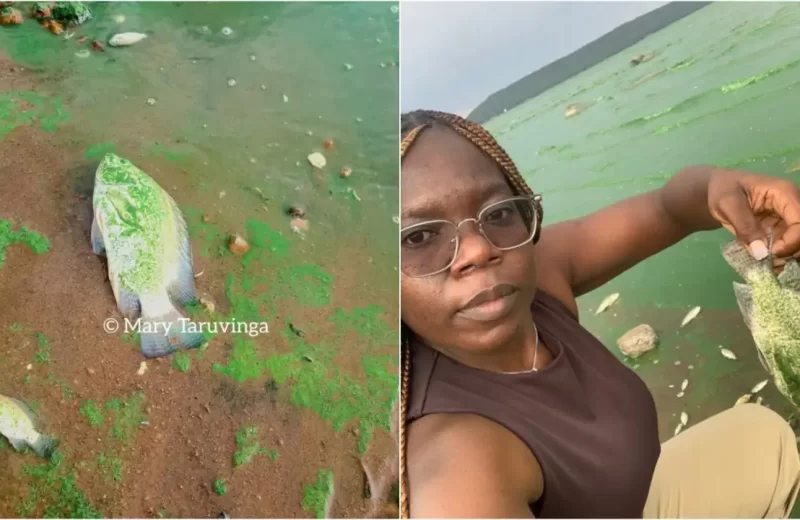Our #MCM is Professor Christopher J. Chetsanga, a prominent Zimbabwean scientist who is a member of the African Academy of Sciences and The World Academy of Sciences. He discovered two enzymes involved in DNA repair. He has also held various academic administrative posts like Vice-Chancellor, Director and Dean.
Professor Chetsanga was born in Murewa, Zimbabwe on 22 August 1935, and was baptised in 1948. In his youth, he was educated at Nhowe Mission, and went on to study at University of California, Berkeley where he received his BSc in 1965. Professor Chetsanga also studied for a period at Pepperdine University. In 1969, he received his MSc and PhD in biochemistry and molecular biology from University of Toronto before becoming a post doctoral fellow at Harvard University between 1969 and 1972. Between 1972 and 1983 he became a professor at the University of Michigan, then in 1983 he left to become the senior lecturer in Biochemistry for University of Zimbabwe.
Awards
Professor Chetsanga has received several awards in his lifetime. He has done publications of a number of gene cloning studies that to produce genetically modified organisms (GMOs). He was also honoured by being made the inaugural president of the Zimbabwe Academy of Sciences (ZAS), fellow of the African Academy of Sciences and fellow of the Third World Academy of Sciences. In addition, Professor Chetsanga was also granted the UNESCO Gold Award (Paris) and the Presidential Award for Distinguished Cancer Research in Zimbabwe. Pepperdine University granted me the Alumni Medal of Honour of Outstanding Professional and Personal Achievement. He was also cited in the 2011 edition of Great Minds of the 21st Century by the American Biographical Institute in the US.
In 2004, when the Zimbabwe Academy of Sciences was formed, Chetsanga was appointed the first president of the academy. Professor Chetsanga advocated the use of genetically modified food sources as a possible solution for food shortages in Africa in 2020.

Scientific Achievements
Professor Chetsanga has discovered two enzymes involved in the repair of damaged DNA: firstly, formamidopyrimidine DNA glycosylase, which removes damaged 7-methylguanine from DNA (1979), and secondly, purine imidazole-ring cyclase, which re-closes imidazole rings of guanine and adenine damaged by x-irradiation (1985).
According to Professor Chetsanga, his research focus in his scientific career has been on DNA and RNA structural and functional details as they relate to cellular metabolism and disease development.
List of Publications
- Chetsanga C.J; Poccia D L; Hill R J; and Doly P; (1970). Stage-related transcription in sea urchin embryos and their chromatins. Cold Spring Harbour Symp. Quant, Biol. 35:629-635.
- Chetsanga C J: Boyd V; Peterson L; and Rushlow K; (1975). Single stranded regions in DNA of old mice. Nature 253:130.
- Chetsanga C J; Novetsky J; and Dimino M J; (1976c). Properties of rat liver mitochondrial RNA Polymerase. Molecular and Cellular Biochemistry 13:147-156.
- Chetsanga C J; and Lindahl T; (1979). Release of 7-methylguanine residues whose imidazole rings have been opened from damaged DNA by a DNA glycosylase from E.coli. Nucleic Acid Research 6:3673-3684.
- Chetsanga C J; and Frenette G P; (1983). Excision of aflatoxin B1-imidazole ring opened guanine from DNA by formamidopyrimidine- DNA glycosylase. Carcinogenesis 4:997-1000.
- Chetsanga C J; and Grigorian C; (1983). A dose-response study on opening of the imidazole ring of adenine in DNA by ionising radiation. International J.of Radiation Biol. 44:321-331.
- Chetsanga C J and Mavunga I; (1986). Mechanisms of Chemical Reclosure of Opened Imidazole Ring of Guanine. Chemical-Biological Interactions 58:117-121.
- Chetsanga C J; Pettersson B; Pettersson U; Gyllensten U; (1991). Detection of human papilloma virus DNA by the polymerase chain reaction. Intl. J. Gynecological Cancer, 1:209-213.
- Chetsanga C J; Malmstrom P A; Gyllensten U; Moreno-Lopez J; Dintzer Z; and Pettersson U; (1992). Low incidence of human papilloma virus type 16 DNA in bladder tumour detected by the polymerase chain reaction. Cancer 69: 1208-1211.
- Chetsanga C J, Nanotechnology in health sciences. Emerging Technologies: Nanotechnology for Equitable Development. Conference Organised by the University of California – Santa Barbara and Woodrow Wilson International Centre for Scholars. Washington DC, USA. November 4-6 2009.
Dandaro Online Appreciation, Zimbabwe Latest News
<p>The post #MCM – Professor Christopher Chetsanga – Zimbabwe’s most eminent scientist first appeared on Dandaro Online.</p>











 Zim Instantly via Simplex Solutions
Zim Instantly via Simplex Solutions